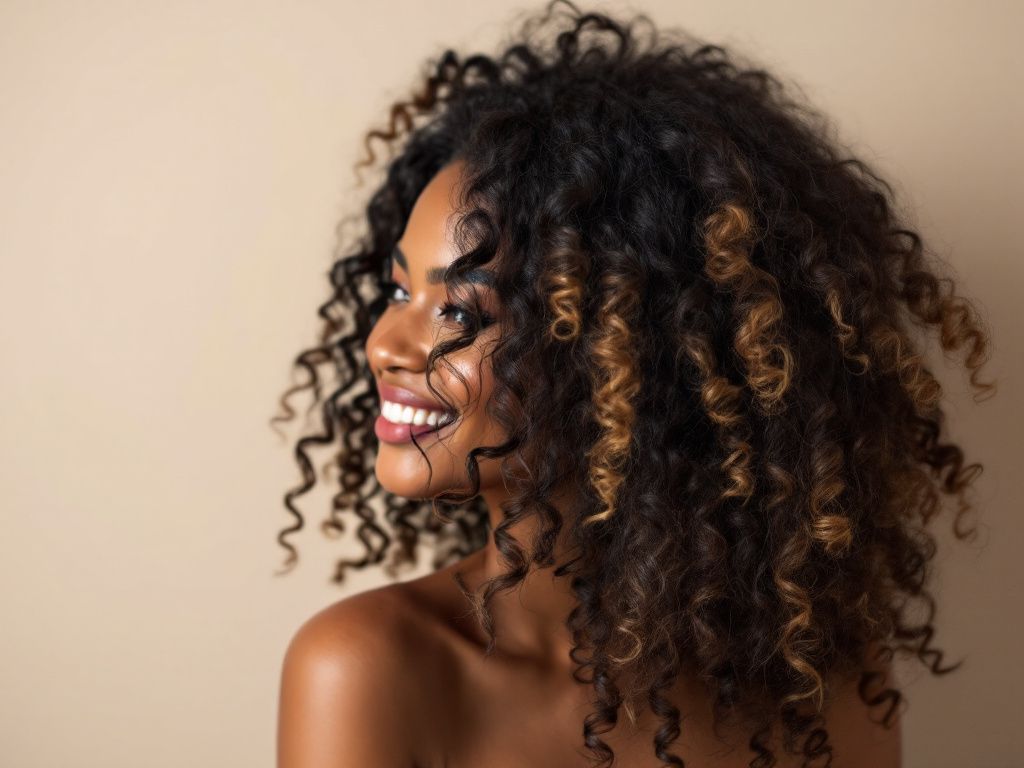
Curly hair, with its varied textures and patterns, requires a specific approach to care that takes into account its inherent characteristics, such as porosity, thickness, and curl type. Understanding the science behind these properties can help tailor more effective hair care routines.
The Science of Curly Hair
Curly hair differs structurally from straight hair in that the shape of the follicle dictates the curl pattern. Curly hair follicles are oval or asymmetrical, causing hair fibers to curl as they grow. This structure impacts the hair’s sebum distribution, often leading to drier hair compared to straight textures.
**Porosity** also plays a critical role in curl management. Curly hair tends to have more cuticle layers lifted or missing, which makes it more susceptible to environmental aggressors, hence why moisture retention is paramount.
Essential Care Practices

**1. Hydration and Moisture Retention:**
The primary concern for curly hair is moisture. Studies have shown that ingredients like glycerin and aloe vera, known humectants, are effective in attracting and retaining moisture in the hair. Look for products that have a water base and include these humectants. A good hydrating product to consider is **DevaCurl One Condition Original Daily Cream Conditioner**, which incorporates olive oil and botanicals to support moisture balance.
**2. Protein Balancing:**
Curly hair benefits from maintaining a protein-moisture balance. Overuse of protein can lead to brittleness, but research shows that proteins like keratin, silk protein, and amino acids can strengthen the hair shaft when used in moderation. For balancing, consider “Shea Moisture Manuka Honey & Yogurt Hydrate + Repair” line, which offers formulations specific for strengthening hair without overloading it with proteins.
Curly Hair Treatments

**3. Deep Conditioning:**
Deep conditioning treatments can significantly improve the resilience and appearance of curly hair. A study published in the **Journal of Cosmetic Science** highlights the efficacy of deep conditioners containing emollients and occlusives, such as jojoba oil and shea butter, in protecting and softening curls. **Briogeo Don’t Despair, Repair! Deep Conditioning Mask** is a highly recommended product in this category due to its scientifically-backed formulation enriched with B-vitamin complex and rosehip oil.
**4. Anti-Frizz Solutions:**
Frizz is often a result of moisture imbalance and cuticle damage. Products with silicone derivatives, like dimethicone, can create a barrier against humidity. However, for curly hair prone to build-up, opt for lightweight serums like **Ouidad Advanced Climate Control® Heat & Humidity Gel**, which offers a formulation that reduces frizz while enhancing the natural curl pattern.

Addressing Common Concerns
**Breakage and Split Ends:**
Curly hair is prone to tangling, which when managed improperly, can result in breakage. Research supports the use of wide-toothed combs and finger detangling to minimize mechanical stress. Additionally, silk pillowcases and scarfs are recommended to reduce friction during sleep, a practice supported by a study from the **International Journal of Trichology**, which associates silk with reduced hair breakage.
In summary, the complexities of caring for curly hair stem from its unique physiological structure requiring moisture retention, careful protein balancing, and protective styling to maintain optimal health. Evidence-based product formulation and strategic care techniques are pivotal to curly hair management, enhancing its natural beauty while maintaining its health.
Frequently Asked Questions
What is hair porosity, and how does it affect curly hair?
Hair porosity refers to the hair’s ability to absorb and retain moisture. It is crucial for curly hair as it determines how well the hair responds to products and treatments. There are three main categories: high porosity (hair absorbs moisture quickly but doesn’t retain it well), medium porosity (hair absorbs moisture at a steady rate and retains it well), and low porosity (hair has difficulty absorbing moisture but retains it once absorbed)[1][3][4).
How can I test the porosity of my curly hair?
To test the porosity of your curly hair, you can use the Float Test. Fill a glass with water, drop a few strands of your hair into it, and observe for 1-2 minutes. If the hair sinks quickly, it has high porosity; if it sinks slowly, it has medium porosity; and if it floats, it has low porosity[1][3][4).
What are the characteristics of high, medium, and low porosity hair?
High porosity hair absorbs moisture quickly but loses it easily, often due to damage from chemicals or heat. Medium porosity hair absorbs and retains moisture at a steady rate. Low porosity hair has closed cuticles, making it hard to absorb moisture but good at retaining it once absorbed. Low porosity hair often looks shiny due to the flat-lying and overlapping scales of the cuticle[1][3][4).
How should I care for my curly hair based on its porosity?
For high porosity hair, use a balance of moisture and protein products to close the cuticle and prevent further damage. For medium porosity hair, use products that maintain moisture balance. For low porosity hair, use gentle, non-stripping cleansers and products that help open the cuticle for better moisture absorption. Avoid excessive heat and chemical treatments for all types[1][3][4).
References

Leave a Reply